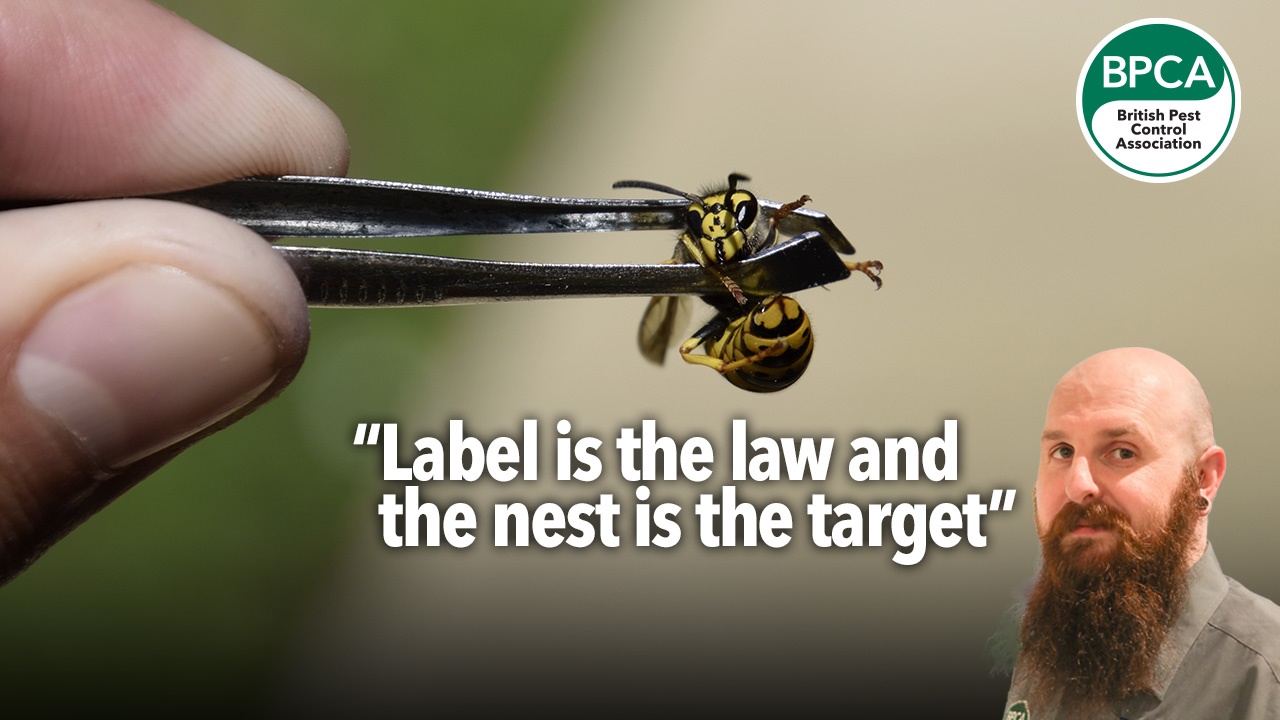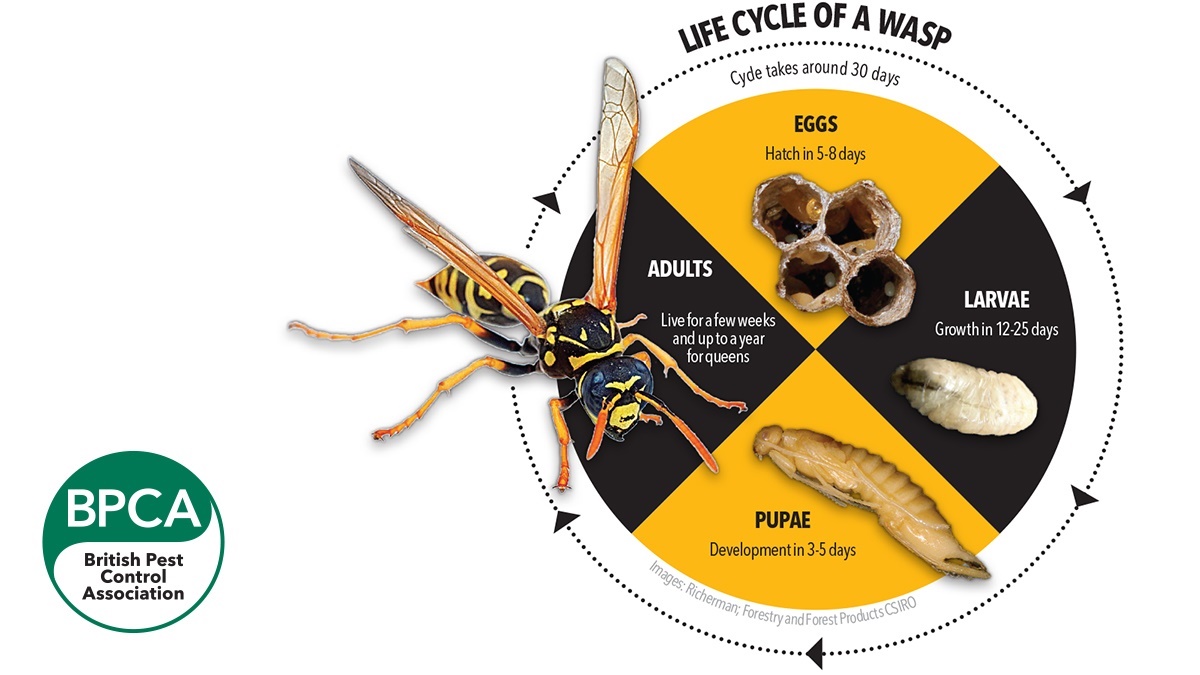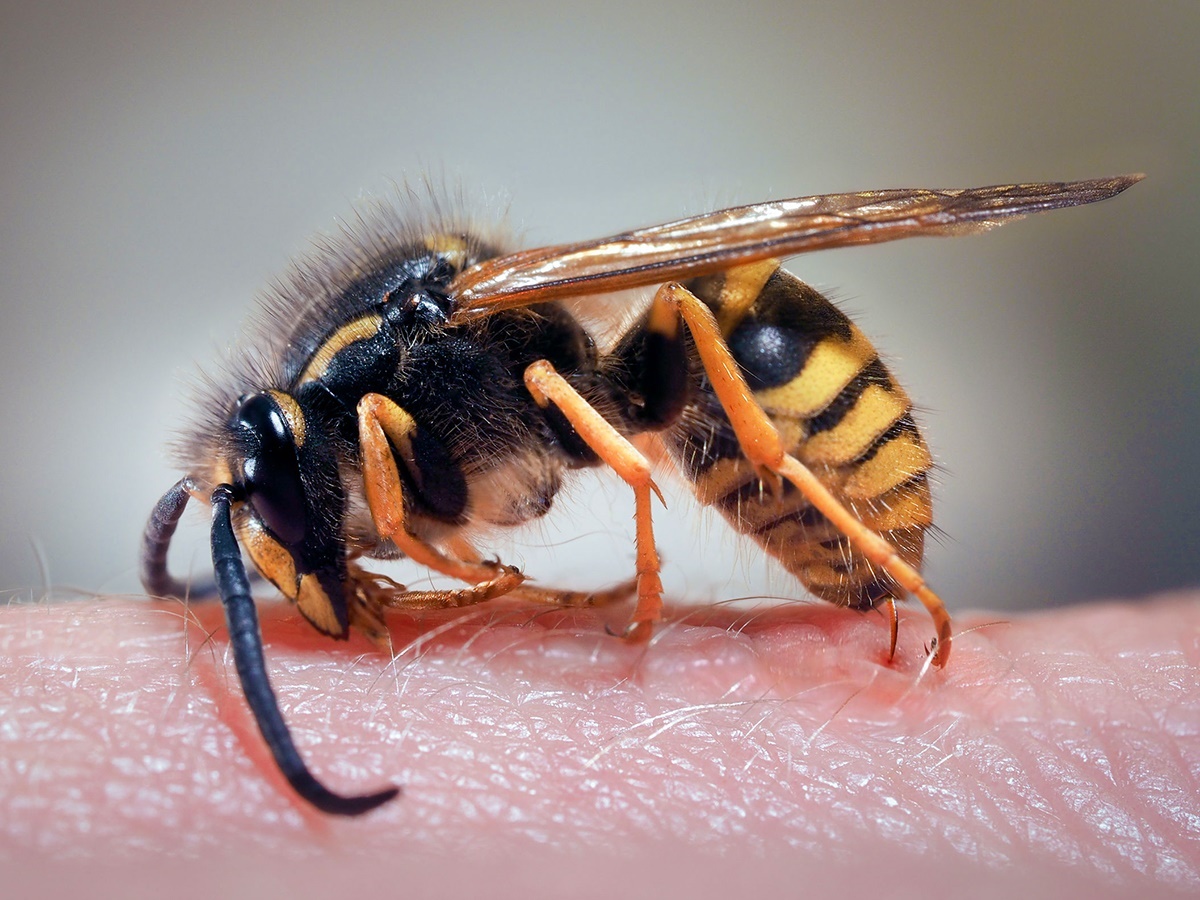TECHNICAL
In this article, Niall Gallagher, BPCA Technical and Compliance Manager, talks about the risks, realities and responsibilities of wasp control.
He covers identification, treatment choices, protecting non-targets, PPE and how our toolkit is changing.

Why we control wasps
We only get involved when human-animal interaction means a nest is no longer compatible with day-to-day life. That might be fear or distress, a risk to health for someone with a sting allergy, food safety concerns in hospitality, or wider issues linked to invasive species.
Wasps do have benefits, from pollination to mopping up caterpillars, but in the wrong place, they present a public health and safety risk we cannot ignore.
On the microbiology side, remember that wasps can spread bacteria mechanically. It is another reasonable justification for control in food and hospitality settings. You wouldn’t accept houseflies on a plate, so why would you accept a wasp?
Know the health risks
If you have ever done first aid, you will remember your ABC: airway, breathing, circulation. I incorporate anaphylaxis and sting response into my risk assessments, which I review at the start of the season.
Repeated stings can increase sensitivity over time, so don’t be complacent in thinking you aren’t allergic just because you’ve been stung before with no reaction!
Lone working, heat, visibility in lofts and how quickly help could reach you are all part of the planning.
Anaphylaxis UK offers excellent short resources, including a wasp venom podcast series.
Keep an eye on people with higher risk factors such as older age, hypertension and lung disease, and make sure clients understand why we sometimes have to postpone or adjust a treatment.
Know your wasps
Identification matters. It raises professionalism and sets client expectations. I use facial and thoracic markings, abdominal banding and overall size to separate common vespids.
A quick phone photo or a hand lens helps. Queens look different again, and you will often first meet them overwintering in loft voids or outbuildings.
A few practical cues from the field:
Common and German wasps are the usual suspects on routine work. I still check cheek dots, anchor or triangle markings and the spacing of thoracic spots to be sure.
Tree and Saxon wasps can build distinctive open envelopes if they are exposed. You will not see that in a cavity, so do not rely on nest shape alone.
European hornets are bigger and louder. If the abdomen is mostly black with a strong yellow band on segment four, you may be looking at a yellow-legged Asian hornet. If you suspect one, report it via the Hornet Watch app.
Behaviour and seasonality
Early in the year, a single queen builds the first cells and rears workers. Once the workforce takes over, she becomes an egg-laying machine. Late season brings new queens and males, then decline and dispersal.

Diet shifts with the season, so lure choice for traps may need to change between spring and late summer.
Aphids excrete honeydew from feeding on the bark, which is attractive to wasps and flies.
Watch for foraging on aphid honeydew on willows and ivy when numbers seem high with no obvious food source.
Cooling behaviour at nest entrances is common on hot days, when workers beat their wings to regulate temperature for brood development.
Non-targets to protect
I keep honey bees, solitary bees and hoverflies off the job sheet wherever possible. If you are unsure whether you are looking at a honey bee cluster or a wasp nest entrance, step back and identify first.
Solitary bee aggregations can look dramatic and create alarm without needing intervention.
Public awareness has increased, where bees are concerned.
Expect questions from neighbours with camera phones and be prepared to explain, calmly, what you are doing and why, particularly if you are using an insecticide near a sensitive area.
PPE and RPE that earns its keep
When it comes to protection against stings, I prefer a full suit. It keeps the confidence up when you are crawling through a loft.
Make sure your respirator fits under your veil, especially if you use a powered positive-air unit or have a beard.
You should also have gloves which suit the task. Footwear should be chemical-resistant.
Top tip: a red-light filter on a head torch helps because wasps react less to red light.

Tools and set-up
Talk to suppliers and colleagues for advice and ideas. There is no single perfect kit for wasp control, there are multiple options. I carry:
- Dust applicators for voids and long reaches, with mini bulb dusters for tight spots
- Sprayers sized for the formulation and task
- Drill and bits for controlled access where necessary, plus a stethoscope for locating activity behind boards
- Tough trays or sheeting to catch drips, and a spill kit
- A vacuum set-up for organic or chemical-averse sites
- Cleaning kit for overspray - if you dust high, you need a way to tidy up high.
Non-chemical options that earn their place
Vacuuming and dig-out can give instant removal on exposed or ground nests and suit organic certification. If you use this method, expect returning foragers and plan for a second visit.
Relocation can work where you have land and the client does not want destruction, but be honest about the risks of reformation and flight-path memory. You can sometimes modify flight paths with temporary screening.
Diatomaceous earth exists as a physical option. Its efficacy depends on how, where and how dry it is applied.
Housekeeping and maintenance are simple value-adds: bin hygiene, fallen fruit removed, rinsed recycling, and fly curtains or screens on busy service doors.
Externally, consider air brick covers, pointing gaps, and tidy soffit edges where you can do so without affecting airflow.
Chemical options done right
Remember: the label is the law and the nest is the target.
Repellency with some pyrethroids can change wasp behaviour, so get product into the nest rather than on the general area.
Consider alternative actives for sensitive locations and speak to your supplier about what is currently authorised.
You can keep callbacks down by aiming for direct nest contact, dosing within the label rate, and choosing your time of day carefully.
Treatment options at a glance
| Option |
Where it shines |
Watch outs |
| Insecticidal dusts |
Voids, under tiles, deep cavity access |
Over-application, visible fallout, repellent behaviour if not placed well |
| Liquid insecticides |
Quick kill on accessible nests, remove same visit |
Runs and drips, overspray, label limitations on surface use |
| Aerosol foams |
Direct nest entrances, small voids |
Short working time, do not assume deep penetration |
| Cold aerosols |
Non-toxic knockdown on exposed nest |
Temporary effect only, expect survivors |
| Vacuum and dig-out |
Organic sites, exposed or ground nests |
Returning foragers, often two-visit work |
| Relocation |
Client preference, land available |
Risk of reformation, time and distance requirements |
| Diatomaceous earth |
Physical mode of action |
Slow, placement critical, still a substance with COSHH duties |
When to treat for best effect
| Time of day |
Pros |
Practical reality |
| Early morning |
More wasps on the nest before they fly |
Requires early start and access |
| Dusk |
Foragers returning carry product into the nest |
Summer daylight makes scheduling tricky |
Doing the job safely
Risk assessments are a must, and they should cover lone working, sting exposure, confined spaces, heat, visibility and egress.
Build in bat checks and consider Sites of Special Scientific Interest nearby before you apply.
In lofts, the veil reduces visibility, so use a good torch and take it slow.
And don’t forget to keep hydrated in heat waves. Heat stroke is not to be trifled with!
You should brief clients about post-treatment risks and leave a short ‘what to expect’ note. It reduces phone calls and builds trust.
Pricing and callbacks
We are professionals, not a bargain bin. Price for the service you deliver, including PPE, clean-up and the real chance of a second visit.
You can either price a single visit with a clearly stated callback fee or offer a package price that reflects the likely return, depending on your market.
If a dust is repelling and you are getting callbacks, try for more direct placement or an alternative authorised active.
Keep products dry. Moist dust clumps up, blocks kit and is harder for insects to pick up.
Waspy tips to use on your next job
Quick ID checklist
- Face markings photographed, including cheeks
- Thorax spots counted and spacing compared
- Abdomen banding checked, especially segment four for suspect hornets
- Size and sound noted if hornet activity is possible.
Callback busters this season
- Aim for nest contact rather than entrance-only dusting
- Keep powders bone dry - try storing with silica gel and seal between jobs
- Schedule for early morning or dusk when feasible
- Leave a clear client note about what to expect for the next 48 hours.
Client housekeeping you can recommend
- Clean bins and segregate waste
- Fit fly curtains on busy doors
- Pick fallen fruit quickly and rinse recycling
- Fit air brick covers and tidy reachable soffit gaps without blocking ventilation.
Future-proofing your approach
Warmer conditions mean the occasional perennial nest and bigger nests that last longer.
Our toolkit changes over time too, and we should continue adapting to keep delivering safe, effective control.
And remember: quick, coordinated responses can eradicate invasive threats. Stay alert and report suspect hornets through the proper channels.
Useful resources
Source: Online